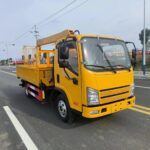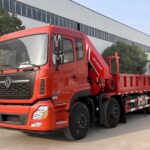Outriggers are an essential component of medium and small tonnage 트럭 탑재 크레인에스, providing stability and support during lifting operations. 하지만, like any mechanical system, outriggers can experience various faults that can affect the performance and safety of the crane. In this article, we will analyze some common faults of outriggers for medium and small tonnage 트럭 탑재 크레인s and discuss their possible causes and solutions.
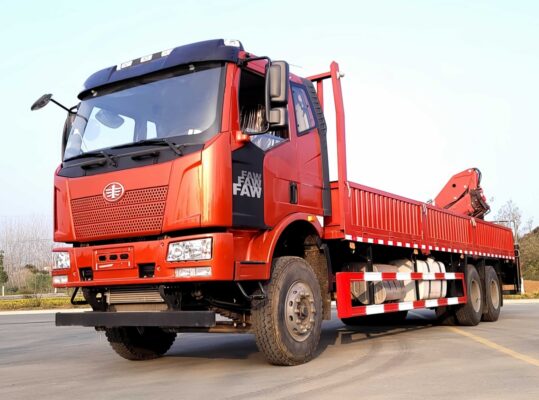
Case 1. When retracting the vertical outrigger, the other four horizontal outriggers of the 트럭 탑재 크레인 are also retracted simultaneously.
This fault can be a significant concern as it can lead to instability and potential safety hazards. Let’s analyze the possible causes and solutions for this issue.
Cause analysis of the fault:
The first step in troubleshooting this problem is to check whether the horizontal outrigger overflow valve of the lower multi-way valve is working properly. The overflow valve is designed to regulate the pressure in the hydraulic system and prevent overpressure. If the overflow valve is malfunctioning, it can cause abnormal behavior in the outriggers.
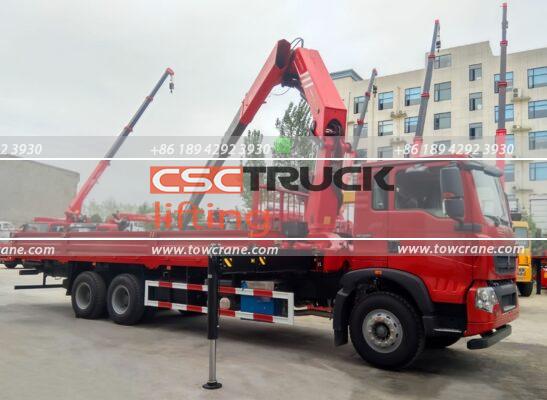
There are several possible reasons for the overflow valve to fail. One possibility is that there are stuck impurities in the valve. During operation, dirt, debris, or other contaminants can enter the hydraulic system and get lodged in the overflow valve. These impurities can prevent the valve from closing properly, allowing hydraulic fluid to flow freely and causing the horizontal outriggers to retract simultaneously with the vertical outrigger.
Another possible cause is damage to the overflow valve. Over time, the valve can wear out or become damaged due to factors such as high pressure, vibration, or corrosion. This can result in internal leaks or improper functioning of the valve.
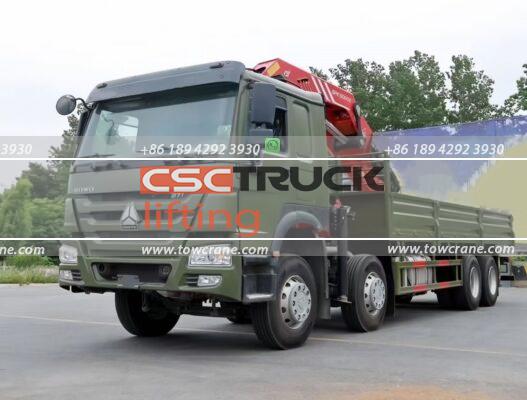
Solution to the fault:
- Check the horizontal outrigger overflow valve of the lower multi-way valve:
The first step in resolving this fault is to inspect the overflow valve carefully. Look for any visible signs of damage, such as cracks, leaks, or deformed parts. Check the connections and fittings to ensure they are tight and secure.
- Remove stuck impurities and clean it:
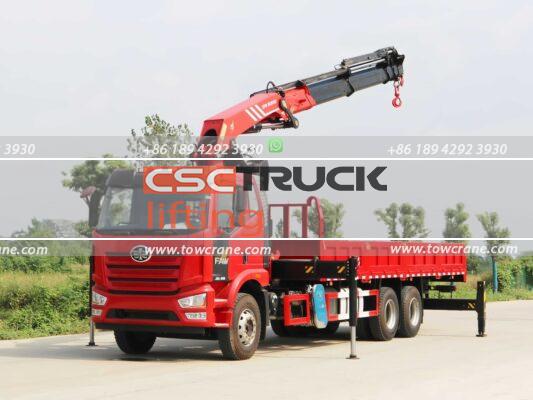
If there are stuck impurities in the valve, it is necessary to remove them and clean the valve thoroughly. This can be done by disassembling the valve and using a suitable cleaning solvent to remove the contaminants. Be careful not to damage the valve components during the cleaning process. After cleaning, reassemble the valve and check its operation.
- Replace damaged parts:
If the overflow valve is damaged beyond repair, it will need to be replaced. Make sure to use a genuine replacement part that is compatible with the 트럭 탑재 크레인‘s hydraulic system. Follow the manufacturer’s instructions for installing the new valve and ensure that all connections are tight and secure.
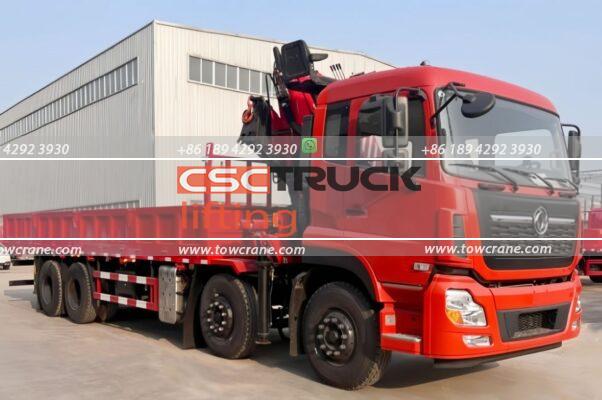
예를 들어, 상상해 보세요 트럭 탑재 크레인 operator who notices that when retracting the vertical outrigger, the horizontal outriggers also retract simultaneously. By following the steps above, the operator can diagnose the problem and take appropriate action. If the overflow valve is found to be clogged with debris, cleaning it may solve the issue. If the valve is damaged, replacing it with a new one can restore the proper functioning of the outriggers.
Case 2. The extension speed of one outrigger is very slow.
A slow-extending outrigger can be a frustrating problem as it can delay operations and potentially affect the stability of the crane. Let’s explore the possible causes and solutions for this fault.
Cause analysis of the fault:

- The positioning of the multi-way valve may be loose:
The multi-way valve controls the flow of hydraulic fluid to the outriggers. If the positioning of the multi-way valve is loose, it can cause inconsistent flow and result in a slow-extending outrigger. Loose positioning can occur due to vibration, wear, or improper installation.
- The horizontal cylinder may have internal leakage:
The horizontal cylinder is responsible for extending and retracting the outrigger. If there is internal leakage in the cylinder, it can reduce the effective pressure and flow of hydraulic fluid, causing the outrigger to extend slowly. Internal leakage can be caused by damaged seals, worn piston rings, or cracks in the cylinder wall.
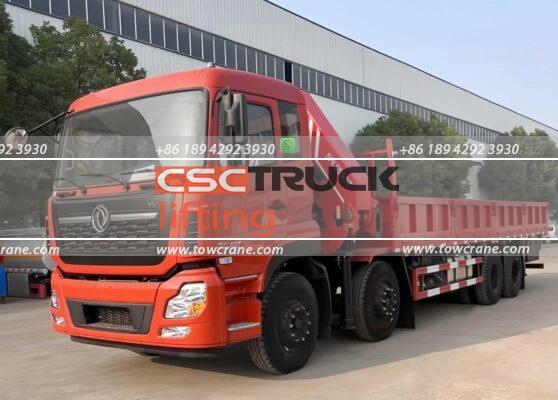
Solution to the fault:
- Tighten the positioning of the multi-way valve:
Check the multi-way valve and ensure that all connections and fittings are tight. If the positioning is loose, tighten it according to the manufacturer’s specifications. This can help ensure proper flow of hydraulic fluid to the outrigger and improve its extension speed.
- Swap the vertical oil pipe and the horizontal oil pipe, and observe whether the horizontal outrigger is still slow:
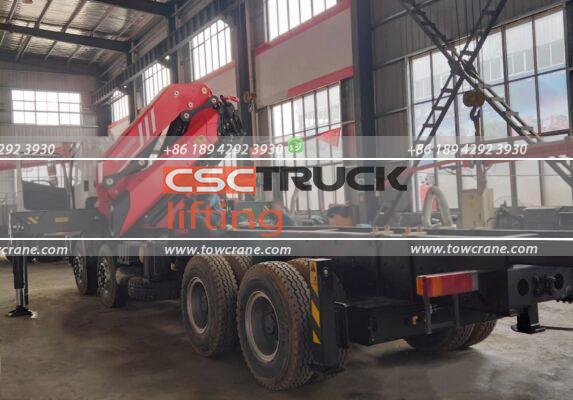
This step is a diagnostic test to determine if the problem is with the cylinder or the hydraulic system. By swapping the oil pipes, you can see if the problem persists or if it transfers to another outrigger. If the problem remains with the same outrigger after swapping the pipes, it is likely that the cylinder is at fault.
- Check the cylinder to confirm the internal leakage of the cylinder, replace the seal or replace the cylinder:
If it is determined that the cylinder has internal leakage, further inspection is needed to identify the source of the problem. Check the seals, piston rings, and cylinder wall for damage. If the seals are worn or damaged, they can be replaced. In some cases, if the cylinder is severely damaged, it may need to be replaced entirely.
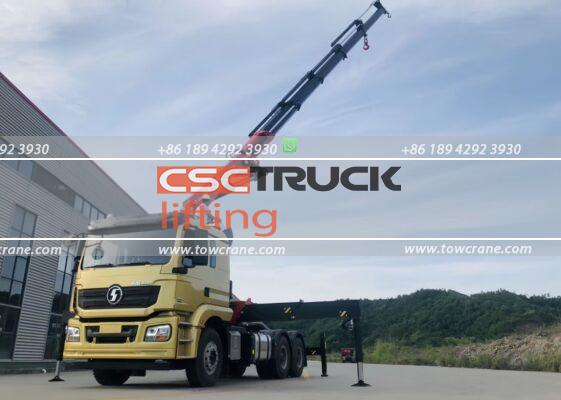
예를 들어, 가정해보자 트럭 탑재 크레인 operator notices that one outrigger is extending very slowly. By tightening the multi-way valve positioning and performing the diagnostic test of swapping the oil pipes, the operator can determine if the problem is with the valve or the cylinder. If the cylinder is found to have internal leakage, replacing the seals or the cylinder can resolve the issue and restore the normal extension speed of the outrigger.
Case 3. The outriggers on the lower part extend and retract slowly and the pressure is low.
This fault can affect the stability and lifting capacity of the 트럭 탑재 크레인. Let’s analyze the possible causes and solutions for this problem.
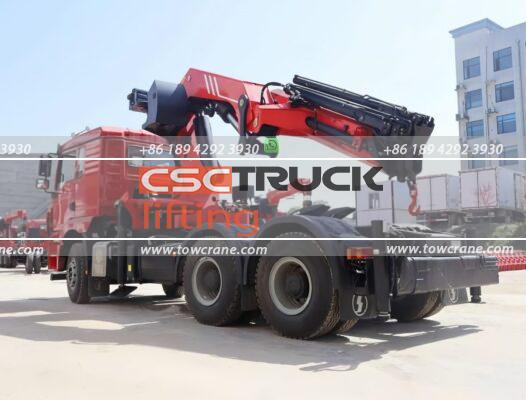
Cause analysis of the fault:
- The internal parts of the overflow valve of the multi-way valve on the lower part of the 트럭 탑재 크레인 are damaged, causing internal leakage:
앞서 언급했듯이, the overflow valve regulates the pressure in the hydraulic system. If the internal parts of the overflow valve are damaged, it can lead to internal leakage and a drop in pressure. This can cause the outriggers to extend and retract slowly.
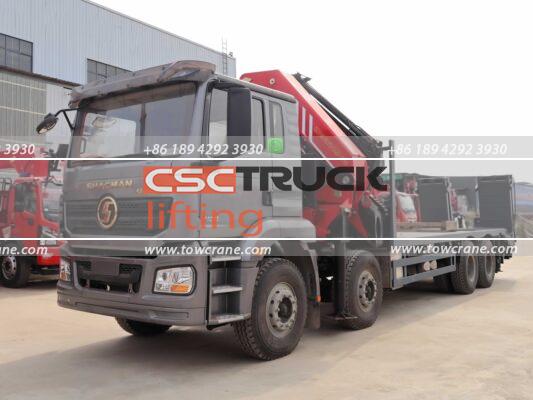
- The P3 pump has internal leakage:
The P3 pump is responsible for supplying hydraulic fluid to the outriggers. If the pump has internal leakage, it can reduce the pressure and flow of hydraulic fluid, resulting in slow extension and retraction of the outriggers.
Fault handling method:
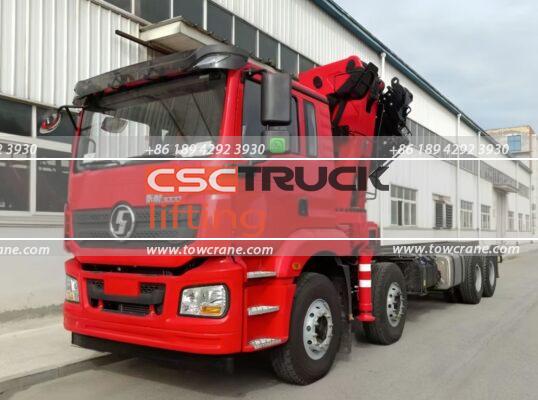
To determine whether the fault is with the overflow valve or the P3 pump, the following steps can be taken:
Check and confirm whether it is a fault of the overflow valve or the P3 pump. The method is as follows: Disconnect the oil pipe leading to the hydraulic oil tank under the multi-way valve, place the outrigger selection handle in the neutral position, move the reversing handle, observe the pressure gauge. When the pressure no longer rises, observe whether there is oil flowing out from the disconnected oil port of the multi-way valve. If there is oil, it indicates that the overflow valve has internal leakage or the pressure value is adjusted too low. If there is no oil, it indicates that the oil pump is damaged.
If the overflow valve is found to have internal leakage or the pressure is adjusted too low, it can be repaired or adjusted as described in Case 1. If the P3 pump is damaged, it may need to be repaired or replaced.
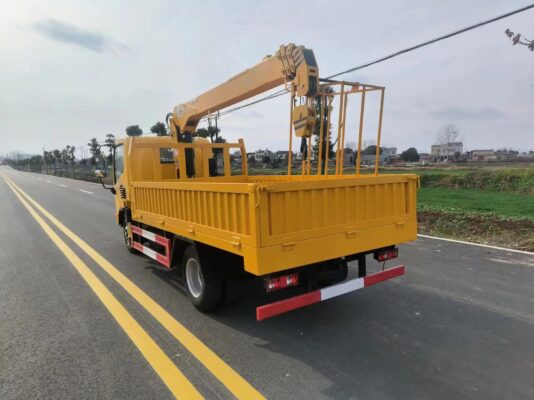
예를 들어, if the outriggers on the lower part of a 트럭 탑재 크레인 are extending and retracting slowly and the pressure is low, the operator can follow the fault handling method to determine the source of the problem. By disconnecting the oil pipe and observing the pressure gauge and oil flow, the operator can identify whether the fault is with the overflow valve or the pump. Once the problem is identified, appropriate action can be taken to repair or replace the faulty component.
결론적으로, understanding and troubleshooting common faults of outriggers for medium and small tonnage 트럭 탑재 크레인s is essential for ensuring the safe and efficient operation of these cranes. By analyzing the possible causes of faults and following the appropriate solutions, operators can quickly resolve issues and minimize downtime. Regular maintenance and inspection of the outriggers and hydraulic system can also help prevent faults from occurring and prolong the lifespan of the crane.





